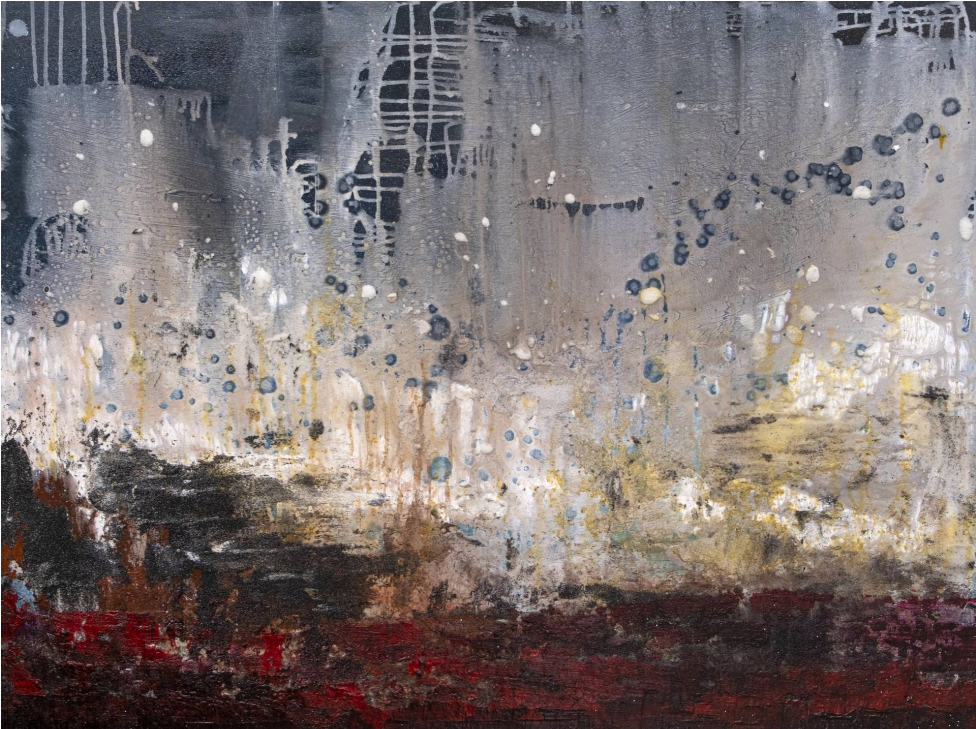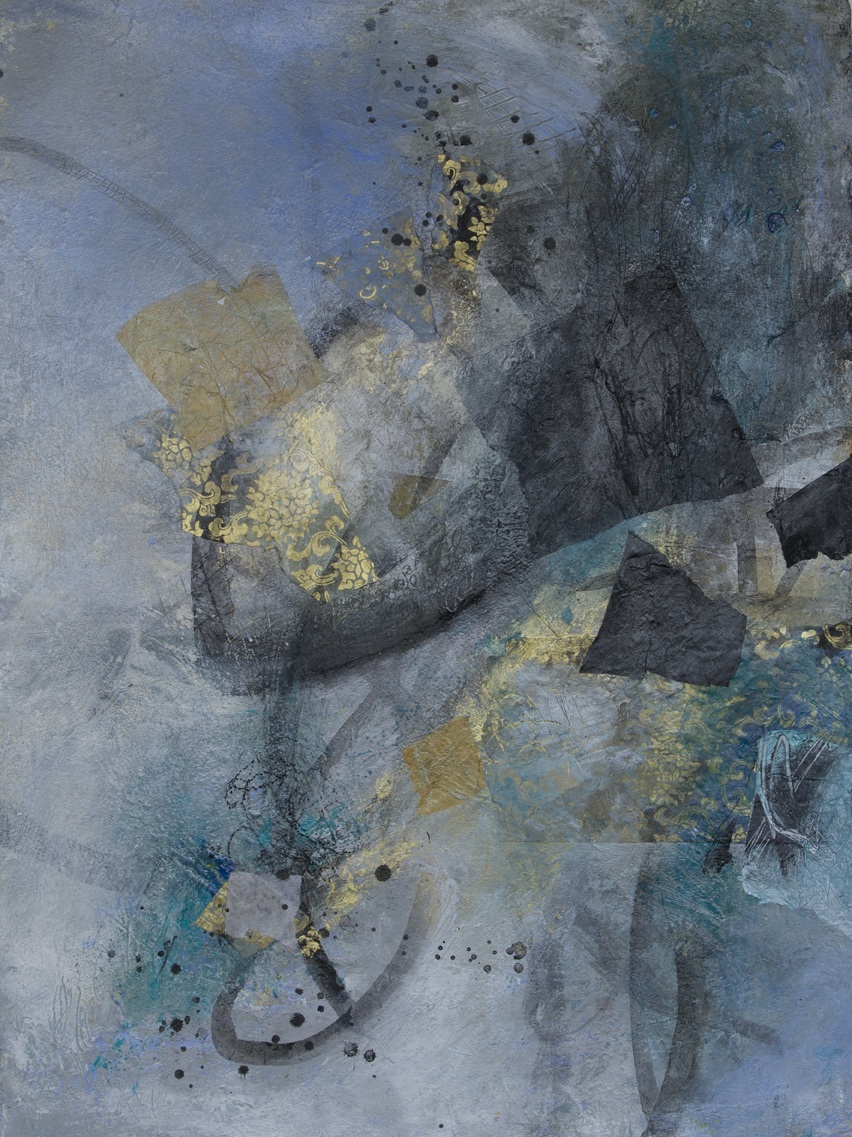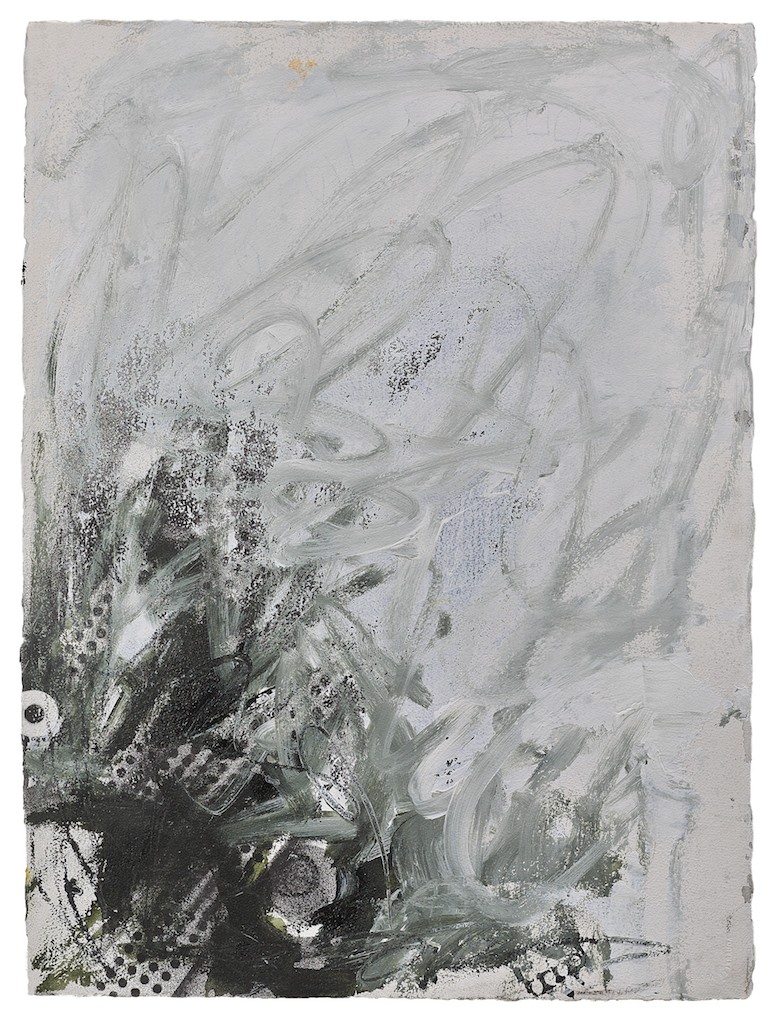I Introduction: What is acrylic paint
Acrylics paint is made with synthetic resin (poymer) as the medium (liquid) to bind the pigment (colour), rather than natural oils such as linseed used in oil paints.
Benefits:
- dries quickly
- water soluble
Features:
- versatile - can be used to emulate oil, watercolors or encaustics
- milky when wet (slightly opaque) but dries clear as opposed to oil paint which keeps the same colour wet and dry. à dry colour is always different than wet colour.
- shrink considerably (approximately 25-40%) upon drying.
Student vs Artist Grade acrylics:
Student grade acrylics
- less expensive pigments (or mixtures of pigments) so the
range of colors is limited.
- In the cheapest brands, they've lots of filler (chalk and kaolin or China clay.) .
- As with so many things, you get what you pay for.
- Don't mix together as successfully (in terms of color produced, not consistency),
- results as vibrant as artist's quality paints.
Professional Grade Acrylics:
What we have at OPUS, categorized in terms of consistency/thickness.
1. heavy body
heavy body acrylics:
smooth, rich, buttery consistency.
ability to "stand up" and retain brush strokes or palette knife marks
excellent flexibility when dry, greatly diminishing the possibility of cracking
- Liquitex (heavy)
- Stevenson (heavy)
- TriArt (heavy)
- Golden (heavy body)
- Open acrylics: Ideal for portraiture and landscape painting
Remain wet on the palette for prolonged periods without skinning over.
2. Medium body
Medium body/soft:
(includes airbrush and ink)
consistency of pudding,
level out and don’t hold peaks.
Blend really nicely.
- Holbein acrylic gouache (medium body)
- Liquitex (medium/soft body)
3. Liquid /airbrush/acrylic inks
Fluids:
high pigment load or color strength
level out
great for staining and washes
Great for fine line and details
illustrators loves them!
- Chromacolour (fluid)
- Golden fluids (fluids)
-Golden airbrush paints (very fluid)
- Liquitex and ---- acrylic inks (extremely fluid)
Gessos & Grounds
PVA size
-Gamblin
-GAC 100
Gessos
- Stevenson
-Golden
-Pebeo
-TriArt
- Liquitex
Other Grounds
-absorbent ground
-pastel ground
-light moulding paste
DEMO: liquid acrylics on absorbent ground and light moulding paste ground.
Safety concerns:
- Many pigments that are known to be toxic – cadmium & cobalt
- Acrylic paints contain additives such as thickeners, levelers, defoamers and surfactants to stabilize, prevent moulding and prevent them from drying too quickly. Your Skin my react to these.
- Acrylics de-gas when they dry. This gas can be toxic.
Reduce the chance of ingestion/absorption/inhalation by:
- Wear gloves or barrier cream
- Wash your hands thoroughly when you’ve finished painting.
- Don’t eat while you’re painting or have food in the studio
- Ensure there’s decent ventilation in your studio
- Keep your art materials out of the reach of kids.
II Mediums and Additives:
Fluid Mediums
Gloss & Matte polymer medium
Colorless paint, as they are composed of 100% acrylic polymers similar to acrylic paint. A general purpose liquid medium useful for creating glazes, extending colors, enhancing gloss and translucency and increasing film integrity. Has a unique feel that is much more oil-like or resinous in nature and that promotes flow and leveling.
Show what we have
-OPUS,
-Golden,
-Liquitex,
-Stevenson
DEMO – using OPUS matte medium to seal a paper substrate surface. Using OPUS matte medium to extend paint
DEMO – using fluid medium to create glazing layers
Mediums for pouring layers –
GOLDEN Acrylic Glazing Liquid - is liquid medium designed to have longer working time than typical acrylic mediums.
Liquitex Glazing Medium - designed to dry quickly for rapid layering
Liquitex Gloss Medium and Varnish – not a true varnish, can be mixed well and easily with liquid paints to create layers of translucent glazes. Will crack if poured too thick.
GAC 800 - Adding small amounts of GAC-800 to the Fluids can reduce the crazing that occurs (that works especially well with the Fluids )
GAC 800 Sample to show - this medium can be poured thickly and used to embed objects without cracking.
The GAC’s liquid mediums defined:
- GOLDEN GAC - Golden Artist Colors
- Specialty Acrylic Polymers are based on 100% acrylic polymer emulsions.
- useful as mediums or modifiers of acrylic paints.
- can be blended with acrylics to extend the paint to:
1. regulate transparency,
2. create glazes,
3. increase gloss,
4. reduce viscosity
5. improve adhesion
6. Improve film integrity.
-have only a minimum amount of thickeners, levelers, defoamers and surfactants to ensure good film formation.
- very fluid and thinner than other GOLDEN Mediums.
- will reduce the thickness of most GOLDEN Acrylic Paints.
Gel Mediums
Gels can be thought of as colorless paint, as they are composed of 100% acrylic polymers similar to acrylic paint. They can also act as adhesives in collage and mixed media that dry to form continuous films with excellent flexibility with chemical, water and UV resistance.
Soft -> Regular -> Extra Heavy
Soft Gel Gloss –
moderately pourable. Hold only slight peaks. The recommended acrylic to function as a glue for collaging. Soft Gel Gloss is ideal for glazing and other techniques where transparency is desired. Useful as a non-removable isolation coat, applied over the painting and before the varnish (must be thinned with water - 2 parts Soft Gel Gloss to 1 part water). Adding water and thining it prevents clouding.
DEMO – using Golden soft gel as an isolation coat.
Regular Gel - Same creamy consistency as GOLDEN Heavy Body Acrylic colors. Ideal for extending paint and regulating translucency without changing the consistency of the Heavy Body and Matte colors. Hold moderate peaks and texture. The Regular Gel Gloss is ideal for glazing and other techniques where transparency is desired.
DEMO – using regular gel to create underpainting texture – on its own or mix with paints.
DEMO – putting regular gel on top of your painting to add depth and texture and thick glazes on your paintings
Heavy & extra heavy gel - Thicker consistency than GOLDEN Heavy Body Acrylic colors. Blend with colors to increase body. Good for holding peaks. * note that it dries translucent – not perfectly clear.
Clear tar gel - mixes with the Fluids for dripping purposes, and can yield lines that range from spider-web fine to brushstroke thick.
Sample Handout - using ALL various gels as glue to adhere and embed stuff into your painting
Self leveling clear tar gel - isolation coat that dries evenly
(GOLDEN medium that work especially well with the Fluids)
Impasto Gel Medium - (steveston) like regular gel but has marble dust so its opaque.
Modeling Paste - regular, light and coarse. Can be used as a ground and to build up texture into your painting.
Additives
Acrylic Flow Release - is a surfactant. A surfactant is a concentrated surface-active liquid which reduces surface tension, thus improving wetting and increasing the flow of acrylic waterborne paints.
Retarder – slows the drying time of paint. Allows greater time for blending, working outside.
IV Painting Substrates and Accessories
Paintings substrates
glass, board, canvas, linen, paper.... (display)
Brushes
BRUSH HEAD BASICS:
1. round – use to dab & make a line
2. flat head – landscape, horizons, washes/glazes
3. bright – less flexible than a flat, more control
4. Filbert – oval dabbing and filling in shapes, most versatile
What we carry:
Fortissimo – ($)
- natural hog hair
- oil brush works great for acrylic
-stiff and thick hair – good for dry brushing and brush stroke effects
Arietta’s ($)
- really soft
- great for the fluids/inks
- won’t work so well with the heavy body paints
Legato ($$)
- More firm
Mezzo ($$$)
- even firmer
Windsor and Newton water mixable brushes ($$$)
- have a fan brush, great for blending
Robert Simmons ($$$)
- synthetic
- hold a lot of water/paint
- very soft
- lots of selection of small sized brushes for detail
Other - palette knifes, rubber shapers are cool to use too!
Palettes
Peel- away palette
Clear plastic Palette
Cansen disposable palette
Non-stick Palette
Stay Web Palette
Clean up:
Wipe acrylics off with a papertowel so you don't get it down the sink
Master's paint cleaner and brush conditioner
Glass jar with coil











